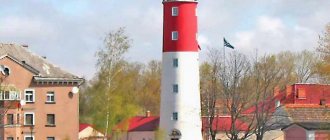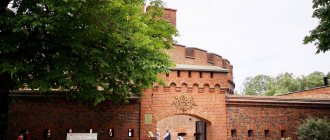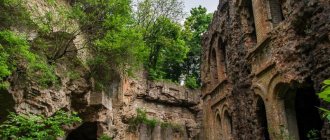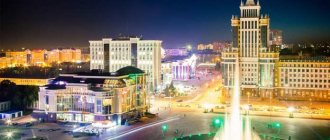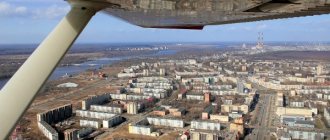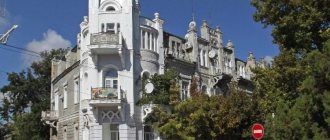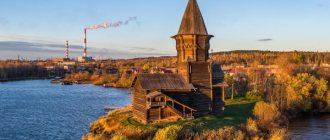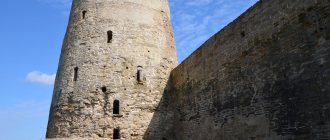City in Arkhangelsk Oblast, Russia
| Velsk Velsk | |
| Town[1] | |
| Aerial view of Velsk | |
| Flag Coat of arms | |
| Location of Velsk | |
| Velsk Location of Velsk Show map of Russia Velsk Velsk (Arkhangelsk region) Show map of Arkhangelsk region | |
| Coordinates: 61°04′N 42°07'E / 61.067°N W. 42.117°E / 61.067; 42.117Coordinates: 61°04′N 42°07′E / 61.067°N W. 42.117°E / 61.067; 42.117 | |
| A country | Russia |
| Federal subject | Arkhangelsk region[1] |
| Administrative region | Velsky district[1] |
| City of district significance | Velsk[1] |
| First mention | 1137[2] |
| Height | 90 m (300 ft) |
| Population (2010 Census)[3] | |
| • Total | 23,885 |
| • Estimate (2018)[4] | 22,482 (-5.9%) |
| Administrative status | |
| • Capital from | Velsk district[1], city of district significance Velsk[1] |
| Municipal status | |
| • Municipal district | Velsky municipal district[5] |
| • Urban village | Urban settlement Velskoe[5] |
| • Capital from | Velsky municipal district[5], Urban settlement Velskoye[5] |
| Timezone | UTC + 3 (MSK [6]) |
| Postal code(s)[7] | 165150 |
| OKTMO I WOULD | 11605101001 |
| Web site | www.movelsk.RU |
Velsk
(Russian: Velsk) is a town and administrative center of Velsky District in Arkhangelsk Oblast, Russia, located on the left bank of the river. The Vel River at its confluence with the Vaga River, 545 km (339 mi) south of Arkhangelsk, the administrative center of the region. Population: 23,885 (2010 Census);[3]26,241 (2002 Census);[8]25,967 (1989 Census).[9]
Story
The settlement was first mentioned in 1137 in the charter of the Novgorod prince Svyatoslav Olgovich as a collection point for church tribute; in the chronicle of 1397 it is mentioned as the volost of Vel.
In 1462, as a result of the stubborn struggle of the Novgorod Republic and the Moscow princes, the Velsky Pogost as part of the Vazhsky volost began to belong to the Moscow state, and in 1550 it became the Velsky Posad.
On October 2, 1780, the coat of arms of Velsk was Supremely approved: “In the first part is the coat of arms of Vologda. In the second part, a barrel filled with tar in a golden field is a sign that the inhabitants of this city are engaged in a noble bargaining with it.” In the 19th century, Velsk was a center of flax production, as well as the manufacture of wood products (resin, turpentine, tar, etc.). Wel fairs became famous.
It received its modern name and status as a county town in 1780.
Since the 80s of the 19th century, Velsk has become a place of political exile. At various times, Pyotr Smidovich, a prominent figure in the revolutionary movement in Russia, Pavel Blyakhin, the author of the famous book “The Little Red Devils,” and Pyotr Moiseenko, the organizer of the Morozov strike in Orekhovo-Zuevo, were in exile in the city. In the 1850s, the writer Alexander Levitov was in exile in Velsk, and from 1866 to 1867, the revolutionary populist Porfiry Voinoralsky (Voinaralsky) was in exile.
Population
Population
| Year | Population |
| 1856 | 800 |
| 1897 | 2000 |
| 1926 | 3500 |
| 1939 | 6700 |
| 1959 | 16 938 |
| 1967 | 19 000 |
| 1970 | 21 899 |
| 1979 | 24 556 |
| 1989 | 25 967 |
| 1992 | 26 800 |
| 1996 | 26 400 |
| 1998 | 26 400 |
| 2000 | 26 200 |
| 2001 | 25 900 |
| 2002 | 26 241 |
| 2003 | 26 200 |
| 2005 | 25 300 |
| 2006 | 26 200 |
| 2007 | 26 100 |
| 2008 | 26 000 |
| 2009 | 25 900 |
| 2010 | 25 757 |
| Source | |
Climate
| Climate data for Velsk | |||||||||||||
| Month | Jan | Feb | Mar | Apr | May | Jun | Jul | Aug | Sep | October | But I | December | Year |
| Average high °C (°F) | −11 (12) | −8 (18) | 0 (32) | 6 (43) | 13 (55) | 18 (64) | 20 (68) | 17 (63) | 11 (52) | 3 (37) | −2 (28) | −7 (19) | 5 (41) |
| Daily average °C (°F) | −12 (10) | −10 (14) | −3 (27) | 2 (36) | 9 (48) | 14 (57) | 16 (61) | 13 (55) | 8 (46) | 2 (36) | −4 (25) | −9 (16) | 2 (36) |
| Average low °C (°F) | −15 (5) | −12 (10) | −6 (21) | −2 (28) | 5 (41) | 10 (50) | 13 (55) | 10 (50) | 6 (43) | 1 (34) | −6 (21) | −11 (12) | −1 (31) |
| Average number of days with precipitation | 21 | 19 | 17 | 15 | 13 | 13 | 12 | 14 | 15 | 20 | 22 | 24 | 205 |
| Source: Weatherbase[16] | |||||||||||||
Transport
Velsk is a railway station on the Moscow-Kotlas-Vorkuta line. Construction in the 1940s Sevdvinlag Pechora (now Northern) railway played a big role in the development of the city. The Moscow-Vologda-Arkhangelsk highway passes through Velsk, and construction of a highway connecting Velsk with Karelia is underway. [ source?
]
4 km south of the city there is an airport with a paved runway capable of receiving middle-class passenger aircraft (regular passenger flights are not currently carried out; the airfield is used for sanitary missions and aviation work).
Social sphere, attractions
The additional education system is represented by a children's art school, a children's and youth center, and a House of Children's Creativity.
The city of Velsk is remarkable in terms of history, culture, and tourism. The most valuable from the point of view of preserving the architectural heritage is the historically developed central part of the city, which has retained its functional significance as an urban center to this day. The main square of the city is represented by public buildings: court buildings, prosecutor's office, local history museum, tax office, House of Culture.
Monuments of local significance are widely represented in the city: buildings of civil architecture, administrative, cultural and educational significance.
Local newspapers are published in the city: “Velskaya Vesti”, “Velskaya Nedelya” and “Velsk-Info”.
Source
Baba Lida Museum
100 km from Velsk there is a very soulful village of Stroevskoye. The surrounding area is hilly. Not many people. The number of permanent residents is about 1143 people. And in this village there is a very interesting attraction - the “Museum of Baba Lida”.
This is an ordinary private house, where the mistress of the house receives visitors and shows a huge collection of antique household items, ancient costumes, tools, tools and labor items. She herself, in national costume, tells and shows everything, and after everything she organizes cooking master classes.
Velsk
center of the municipal district Velsky district
Population: 23.820 thousand people. (2011) First mentioned: 1137 Nearest airport: Talagi
Velsk received city status only in 1780 by decree of Catherine II. The city also became the administrative center of the Velsky district of the Vologda province.
Local residents were mainly engaged in trade. Oats, rye, flax seed, and fiber were brought out for sale. A day was set aside - Thursday, when fairs and bazaars were organized in the city. The Afanasyevskaya Fair was famous for its scale, which attracted merchants from such large Russian cities as Moscow, Yaroslavl, Kargopol, Galich.
The Moscow highway was an important means of communication; mail and goods were sent along it. One of the successful production products was tar, so a barrel filled with this liquid was chosen as the symbol of Velsk. It is located on the city’s coat of arms.
The architecture of Velsk was, for the most part, wooden, and consisted of one- and two-story buildings. The city's population was small; houses were located on only ten streets. It was the smallest city in the Vologda province.
In the 70s of the 19th century, Velsk became a place of political exile, and continued to be so until the 30s of the 20th century. And in 1929 it became a regional center as part of the Northern Territory. Already in 1942, a railway was being built in the city.
The atmosphere of past centuries can still be felt in the city. The main attraction of the city is the local history museum, which preserves a large number of monuments and objects of spiritual culture.
Source
The most beautiful towns of the Russian North: Velsk
Velsk is a regional center in the Arkhangelsk region on the banks of the Vaga River. 22 thousand people live here. We decided to walk around the city in the morning before going to the Povazhye House Painting Museum.
Officially, Velsk is not yet included in the Association of the most beautiful villages and towns in Russia, but after walking around the city with a camera, I think that the city is quite worthy of this title.
So, we leave the car near the local history museum and go for a walk.
Scheduled stop. A little imagination and effort, and the city is transformed.
Behind the stop is the House of Culture. He's not quite ordinary. From the outside you can’t tell that this used to be the largest temple in the city - the Cathedral of the Transfiguration of the Lord.
On the other side you can see what little remains of the temple's architecture.
We go out to the embankment. The embankment in Velsk is wonderful even in winter.
For me, real beauty is not gilding, special types of marble and palaces behind six-meter fences, but houses like these in cozy towns.
Walking here is a pleasure even in minus 20 degrees below zero.
And look at the river! Such landscapes beg to be painted.
Recently a monument to Mikhail Lomonosov was erected on the embankment. He is dressed just for the weather.
Also worth noting is the reconciliation bench.
Every time I regret that we don’t have enough time to explore the cities and villages longer. But there is a lot to do, there are long stretches ahead, and the daylight hours are still short.
Not far from the embankment we go to a grocery store and feed our companion; this dog tagged along with us near a painted stop and walked with us all the way.
We go for a walk further around the city, away from the embankment, there are also a lot of interesting things there. Historical buildings in Velsk have been well preserved.
However, the Soviet legacy is also found. For example, a little constructivism.
Or Lenin, listed in the back of an art gallery.
And this is modern creativity. Velsk did not freeze in the 19th century.
But still, the face of Velsk is old houses. There are many of them, most of the houses are maintained in good condition.
Some require care.
Pay attention to the signs with house numbers in Velsk. It's just a fairy tale! And, note, this does not require multimillion-dollar budgets.
One of the most beautiful houses in Velsk. It houses a museum of house paintings, the only one in Russia. In Povazhye, there used to be a widespread tradition of painting the gables of houses and the inside of the houses themselves. This painted house was transported to Velsk from the village of Malaya Lipovka.
If you are in Velsk, be sure to come see the lion and unicorn, or even better, go on a tour. The most interesting thing is that later we came across houses with paintings with the same plot in several villages.
In general, I think you will agree that Velsk is a beautiful town. The members of our expedition believe that it deserves to be included in the list of the most beautiful villages and towns in Russia.
Source
Horse breeding complex
Velsk is proud of the Khoroshevsky horse breeding complex. Here you can watch trotting races with testing of breeding horses. Even in winter you can come for a tour of the stables or for horse riding lessons. You can also just ride a horse through the beautiful surroundings. Horses can be fed carrots, sugar or bread. If an hour is very short, then there is a chance to purchase a subscription to the sports section.
What region is Velsk?
Velsk-Inform post pinned
15 facts about the Velsky district
Velsky district is located in the south of the Arkhangelsk region. This is a wonderful region with a centuries-old history, which is full of exciting events.
1. According to the administration of the Velsky district for 2022, the district ranks first in the region in terms of population. The population density is 4.8 people per 1 square kilometer.
2. In the middle of the 19th century, Velsk hosted Emperor Alexander II.
3. In Pezhma there is the Church of the Epiphany with a bell tower, the construction date of which dates back to the beginning of the 19th century. The best thing is that today the temple complex continues to operate and is open to tourists.
4. In the past, Velsk was a place of political exile. Hundreds of people served their sentences in the Velsk region, among them were P.A. Blyakhin - Soviet writer and P.G. Smidovich is a leader of the revolutionary movement in Russia.
5. Daria Stavrovich - Russian singer, composer, vocalist of the group “Slot”, born in the city of Velsk.
6. Mikhail Vasilyevich Lomonosov stopped for the night at an inn near Velsk when he was on his way to Moscow with a fish train.
7. Velsk is one of the most ancient cities. It was first mentioned in chronicles in 1137.
8. In November 2022, the first and so far only museum of house paintings in the Arkhangelsk region opened in Velsk. The “Museum of House Paintings of Povazhye” conducts various excursions; in the museum you can learn not only about the paintings, but also about the life of peasants and the structure of an ancient house.
9. Nikolai Rubtsov’s fiancée, Lyudmila Derbina, found guilty of murdering the poet, lived in Velsk after leaving prison.
10. Famous geneticist and ally of N.I. Vavilova Georgy Dmitrievich Karpechenko was born in the city of Velsk. He was shot during the years of Stalin's repressions.
11. In the village of Khoroshevskaya there is the largest horse breeding complex in the Arkhangelsk region. Here you can take an excursion, feed the horses, and also learn horse riding.
12. In the village of Bereznik, Velsky district, there is a chicken hut (a house that was heated by a stove without a chimney), built 200 years ago. This building is the only one preserved in the Velsk region. On special excursions you can go inside and see the decoration of the hut.
13. Since the 16th century, the main trade of the Veliki residents was tar smoking. Velsk resin was exported for sale abroad. As a sign of this, a barrel of tar is depicted on the coat of arms of Velsk.
14. Alexander Selyaninov, a skier from Velsk, in 2012 became the champion of the 1st Youth Olympic Games in the 10 km classic style race.
15. During the Great Patriotic War, residents of the Velsk region worked unitedly for the benefit of the front. 710 thousand rubles were collected for the construction of a tank column, collective farms donated tons of grain to the Red Army Fund. The region hosted evacuees and supplied the front with clothing, skis, and food.
If you liked the post, subscribe to Velsk-Inform! We have the latest news from your area
Source
Notes from a Northern Bear
Cogito ergo sum
In Velsk I watched the Morning of the Russian North.
It was precisely this epithet that came to mind when contemplating the landscapes of this small town in those hours when most of its inhabitants were still sleeping, and the sun was gradually rising after a short northern night. Velsk is one of the most ancient cities of the Russian North (first mentioned in 1137), but it is not the most interesting in terms of attractions, but it is also very cozy. The city has 23 thousand inhabitants and is located among forests and picturesque northern villages. 2. The stop is only 5 minutes, and I watch the summer resort train. In the head is a TEP70 diesel locomotive from the Kotlas depot. After 117 kilometers, in Konosha, it will be replaced by an electric locomotive.
3. There is a new station in Velsk. Quite beautiful and unusually large and spacious for a city of its size. Inside we managed to have a delicious breakfast at the buffet.
5. Station from the city side:
6. After leaving the station, I went for a walk around the cozy morning Velsk.
7. Near the station there is an industrial zone:
8. Among the five-story buildings there are wooden railway houses that clearly date back to the construction of the Pechora Railway.
9. Characteristic barracks of railway workers. With wooden walkways typical of the Russian North. After all, there is a forest all around here.
10. School of typical Stalinist construction:
11. It’s not even six in the morning. The town is still sleeping.
12. There are many cozy-looking wooden houses in Velsk. This is what one of the main streets of the city might look like (this is, like, Pushkin Street).
13. It seems that the only intersection in the city with a traffic light:
14. There are also typical northern barracks houses here:
15. And also (but of a much older type) typically northern five-walled huts:
18. Even close to the city center, some streets may be dirt roads.
19. Walking around Velsk, I sometimes heard the sound of wheels and the whistles of diesel locomotives, which here probably carried for many kilometers into the forests. And from the appearance of some of the huts it is clear that they remember the times when there was no railway here.
20. A dirt street led me into some bushes. An elderly man with a dog walked towards me along the path, and then I saw in front of me a sandy beach and the Vel River, where the city ends and nature appears before my eyes. Although there are quite a few villages behind the nearest forest.
21. Three kilometers later, the Vel flows into the Vaga - one of the largest tributaries of the Northern Dvina. The Vel bridge is crossed by the road leading from the city to the Arkhangelsk highway. I then used it to travel.
22. After standing by the river, I return to the city streets:
23. More old houses, of which, probably, a hundred years ago the city consisted almost entirely. In the house on the left, as the memorial plaque says, in 1919 the first meeting of the local Komsomol took place.
As already mentioned, Velsk has been known since 1137. For a long time it was a Velsky churchyard, then, from 1550, a posad, and from 1780 - a city - the center of the Velsky district of the Vologda province. Now it is part of the Arkhangelsk region, but it is twice closer to Vologda (260 kilometers, versus 540 to Arkhangelsk), and, it seems to me, it gravitates more towards it.
Like many cities in the North, Velsk, even before the revolution, was a place of exile, which some Russian revolutionaries served here, including, for example, the organizer of the Morozov strike, Pyotr Moiseenko. During the Stalin years, these places were not spared by the GULAG, when the construction of the Pechora Highway was underway here. And in the post-war years, the city continued to develop as one of the centers of the timber industry.
26. Although Velsk does not have a large number of attractions, this city has its own charm.
27. So I came to the deserted Lenin Square at six in the morning - the main one in the city. Its central building, by the way, is not the administration, but the court.
28. Bent over Lenin with a cap in his pocket stands against the backdrop of the school:
29. A sluggishly restored old house is adjacent to a new building:
30. The square is landscaped, there is even a whole fountain. Several pre-revolutionary merchant houses have survived.
31. The other side. In the house in the background there is a local history museum.
33. And in this house is the editorial office of the regional newspaper “Velskie Vesti”.
34. And these are already Soviet barracks houses. In Velsk they are common, and I have never come across such masterpieces as in Sharya, Kotlas and Arkhangelsk.
35. In Velsk there is Embankment Street, already facing the Vaga River. Even though it’s half a kilometer from here to the river, the cliff of the river valley is already next to the street, and probably during the spring flood the water reaches right here.
On the map, Velsk looks like it is located at the confluence of two rivers, but in fact the city is more facing Veli, and only the Lesobaza area is located behind Vaga, and the city only reaches the confluence of two rivers at the northern end, and I did not get there. r lying on its side
, and the mouth of the Veli is in its middle. On the Vaga, Velsk is the largest settlement and one of two cities (the second is Shenkursk downstream). It flows here from the Vologda region, where the village of Verkhovazhye stands on it, and is almost constantly parallel to the Arkhangelsk highway (or rather, vice versa), and 250 kilometers north of the Vaga it flows into the Northern Dvina.
36. Behind Vaga is the village of Argunovskaya and a slender pine forest.
37. And the sky of the northern morning.
38. Pre-revolutionary wooden house:
39. And this house is probably already Soviet:
40. Here, next to the cliff of the Vazh valley, there is a city cemetery and the Assumption Church (1793-96).
41. And in this house there is a church shop:
42. Polite sign, however!
43. Another old house, now occupied by a school:
44. And this is Dzerzhinsky Street, which can probably be considered the main one in the city. The time was steadily moving towards seven in the morning, and the city was waking up. This street was already quite crowded.
45. There are also shopping centers here.
46. The 7-story new building on the right side of the frame is probably the tallest building in Velsk.
47. And here you can see a corporate bus of one of the main city enterprises, the name of which makes you want to write “Tales of the Wel Forest” about these places. The sawmill is located behind the bridge over the Vaga.
I came to the railway again. The crossing leads to the southern, out-of-the-line part of the city, but I didn’t go there. Instead, I already went back to the station.
49. In Victory Park there is a memorial to the Velikiye residents who died in the Great Patriotic War:
51. And also to the Internationalist Warriors:
52. Gagarin Street leads me back to the station:
53. About twenty minutes later I reached Filyaevskaya. The village itself is small.
54. Looking back. On the left you can see the bus I arrived on. Back towards the city there is a chain of villages: Petukhovskaya, Gorka Muravyovskaya, Voronovskaya and Lukinskaya (a characteristic feature of the toponymy of the Russian North is villages with the “-skaya”).
55. I didn’t walk along Filyaevskaya in detail. I just passed it in a few minutes.
56. There are still three kilometers to the highway. Now I’m walking along the old highway - before the bypass was built, it passed through Velsk.
57. Vaga flows somewhere nearby. You can even discern its high right bank.
A few minutes later I stopped a truck with license plates from the Sverdlovsk region. The truck driver turned out to be from Nizhny Tagil and was transporting cargo to Arkhangelsk. I didn’t have to drive straight, but only 60 kilometers along the highway before turning to Kargopol. The weather became cloudy and it rained a couple of times. Already before the desired turn, the road in one place picturesquely approaches the bank of the Vaga. I come out at the turn with a sign saying that the road to the left leads to Nyandoma and Kargopol. There are 213 kilometers left until the last one.
59. By the way, the weather has cleared up here again. The sun came out.
60. Northern Russian forest:
A minibus with Vologda license plates stopped quite quickly at the turn. Very pleasant Vologda residents with a distinct, ringing accent, a husband and wife who looked about 35 years old, were going to visit and go fishing in some village near the border of the Arkhangelsk region with Karelia, and therefore I was immediately on the way to Kargopol with them. I especially remember that “Nautilus Pompilius” was playing in the car all the way. More than two hundred kilometers of forest landscapes, with hills, villages, and sometimes lakes. We passed without stopping the city of Nyandoma (20 thousand inhabitants), located on the Arkhangelsk railway, and therefore serving as the gateway to Kargopol from the train. The quality of the road varied. After the almost perfect Arkhangelsk route, at first it seemed completely broken, in a couple of places it was undergoing repairs. The road became noticeably better after entering the Kargopol district. Just before Kargopol we were caught in a short but completely torrential rain, which had ended by the time I arrived at my destination. Well, Kargopol, standing on the Onega River, is an amazingly beautiful small city. Next time I will tell you exactly about him.
Source
